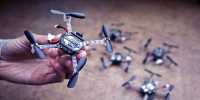Twitter says it is now conducting a test with a small subset of iOS and Android users to “give people an accurate preview of what an image will look like without the trials and errors now involved in the process” to make it stand out now Crop to display, where users often scroll without pre-clicking the image.
However, this approach has created some problems. The historically largest is Twitter’s algorithm that decides which part of an image shown to be back-in racist bias. The algorithm prefers a white face to a black face in the preceding of his image, even trimming a former U.S. president in a one-man test.
Twitter’s automated image handling is also a hassle for photographers and artists, who generally prefer to have complete control over how an image presented. If the crop is closed, a small wrong fire can distinguish between a photo that attracts tones and a photo that ignored directly. It also destroys descriptive tweets, such as the Twitter example of a note in his tweet about a dog that is clearly missing from one of his crops. Looks like Twitter is trying to show a more complete picture in the timeline.
In tweets, Dantley Davis, Twitter’s chief design officer, said anyone who tests the new image cropping system will see that most single image tweets in the normal aspect ratio will not get a crop at all, although super wide or super tall images can weigh a crop around the center. For photographers (including the current company) tired of toggling between Instagram’s preference for portrait-based images and Twitter’s emphasis on landscape cropping, that’s also good news.
As you can see in the sample image, the change could actually turn Twitter into a richer visual platform. This probably means there are more scrolling past images that take up the value of multiple tweets’ verticals, but we would be happy to spend time clicking through images for a nice Twitter timeline.
















